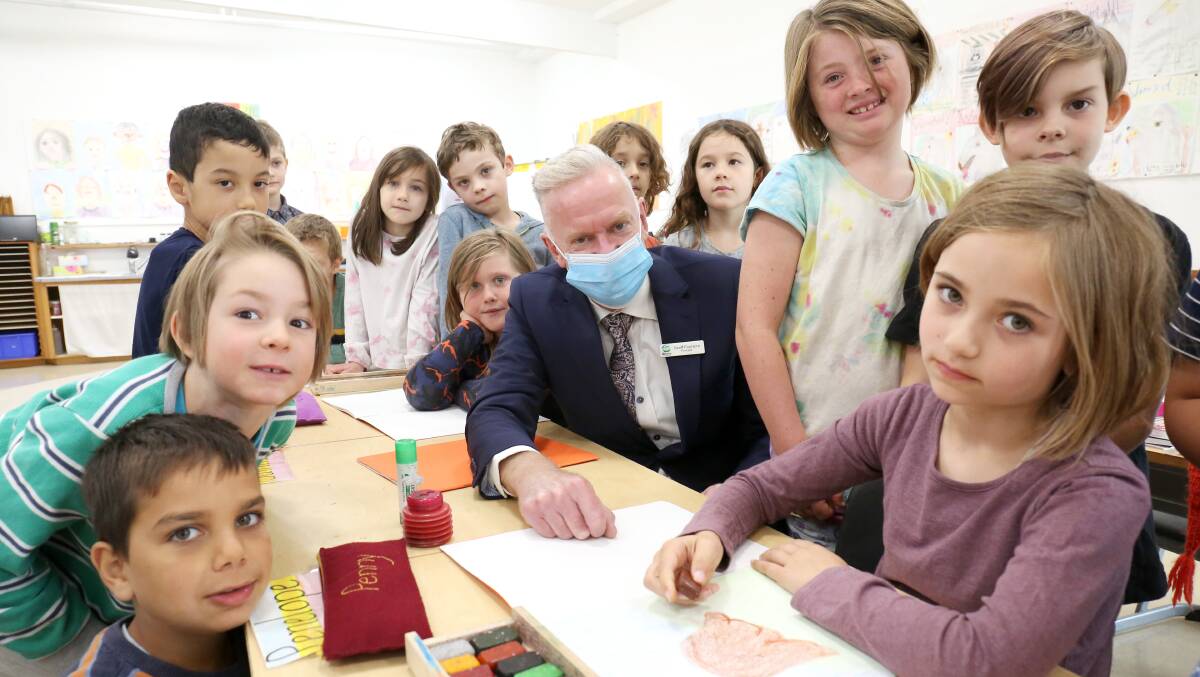
Canberra non-government schools with modest fees have punched above their weight in the latest NAPLAN results.
Parents will be able to view how their child's school has fared in 2021 compared to students with a similar background from Wednesday when the latest data is published on the My School website.
Orana Steiner School in Weston takes a different approach to mainstream schooling but it's paying off, with students progressing well above average across reading, writing and numeracy in the younger cohorts.
Principal Geoff Fouracre said there had been a focus on improving literacy and numeracy in the primary school through explicitly teaching these foundational skills.
Mr Fouracre said the Steiner philosophy also encouraged deep learning and strong relationships between educators and students.
"In the Steiner program, the primary teacher stays with the class throughout their journey through primary school and the deep relationships that evolve, not just each year but from year one through to year six, we believe was an important part in the improvement of literacy," Mr Fouracre said.
"When the lockdown occurred, the depth and understanding and mutual trust of the relationship between the parents and the teachers and the students meant that they could draw on a base of already working solidly together. We believe that was a very important part of why lockdown was such a successful time for us."
In the Steiner approach, students don't use technology for their learning until the high school years.
Each day the students from year one to year 12 start with what is called the main lesson, where students examine a theme, such as outer space, while integrating different subjects.
"The advantage of that is that we really encourage the kids to make the connections between all of the different subjects and content that they might not necessarily make in a more traditional approach."

The updated My School data demonstrates that ACT students at high-fee private schools or those from high-income families in the public system don't necessarily perform well compared with students from similar socioeconomic backgrounds across Australia.
All-girls schools tended to record better progress and results than all-boys schools.
Catholic systemic schools Mother Teresa School in Harrison and St Francis of Assisi Primary School in Calwell had students improve their writing scores above other students with the same starting scores and similar backgrounds.
Emmaus Christian School assistant principal of teaching and learning, Luke Willsmore, said strong parental engagement and professional development for teachers were both key to the school's consistently strong NAPLAN results.
"The results we're seeing are very pleasing and the calibre of our teachers, we're very proud of," he said.
The teachers have a week dedicated to professional learning during the mid-year school holidays.
Mr Willsmore said there weren't any specific programs targeting literacy and numeracy but the school tended to use explicit teaching practices.
"The big debate between explicit teaching and inquiry teaching is obviously raging with the Australian Curriculum [review]. We do a bit of a mix but do lean towards the explicit teaching model here."
For him, the raw data which shows how individual students have progressed over the years was the most useful aspect of the national testing regime.
"It can look at that progression of a student going from wherever they began and progressing along their learning journey."
Centre for Independent Studies education fellow Glenn Fahey said the choice of school was not the final determinant of how well a student would do academically.
"High-performing schools are schools with high-performing teachers," Mr Fahey said.
"It can't just be about the reputation of a school or its historical record.
"Parents should feel confidence in the teachers and the leadership of a school."
Mr Fahey said the My School website does offer transparency for parents to see which schools were high-performers and those who used the website felt more satisfied with their choice of school.
"It's a valuable tool but it's not one that everyone uses."
Research commissioned by the Australian Curriculum, Assessment and Reporting Authority found of the parents who visited the My School website, 41 per cent wanted to see how their child's school was performing in literacy and numeracy, 41 per cent used it to inform education decisions, 32 per cent wanted to compare schools' performance and 21 per cent wanted to find schools within a geographic area.
Mr Fouracre said the point-in-time test was just one measure of a child's progress.
"It doesn't give you a whole picture of where the school's at, but it provides useful information that can and should be used diagnostically. And that's exactly what we've done."







